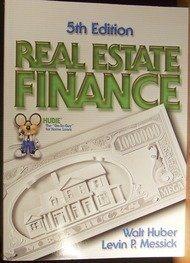Answered step by step
Verified Expert Solution
Question
1 Approved Answer
In 2023, Kathleen Tweardy incurs $30,000 of interest expense related to her investments. Her investment income includes $7,500 of interest, $6,000 of qualified dividends, and
 In 2023, Kathleen Tweardy incurs $30,000 of interest expense related to her investments. Her investment income includes $7,500 of interest, $6,000 of qualified dividends, and a $12,000 net capital gain on the sale of securities. Kathleen asks you to compute the amount of her deduction for investment interest, taking into consideration any options she might have. a. If Kathleen elects not to treat the capital gain and qualified dividends as investment income for purposes of the investment interest expense limitation, her deduction will be $ b. If Kathleen elects to treat the capital gain and qualified dividends as investment income for purposes of the investment interest expense limitation, her deduction will be $ c. In addition, Kathleen would like your suggestions about any tax planning alternatives that are available. Complete the letter to her that contains your advice. SWFT, LLP 5191 Natorp Boulevard Mason, OH 45040 February 28, 2024 Ms. Kathleen Tweardy 11934 Briarpatch Drive Midlothian, VA 23113 Dear Ms. Tweardy: In our recent meeting, you asked me to determine the amount of your investment interest deduction for 2023. The amount of the deduction depends on choices made regarding the treatment of the capital gain on the sale of securities and the qualified dividends. The deduction for investment interest is limited to the amount of net investment income reported. If you choose not to treat the capital gain and qualified dividends as investment income for purposes of the investment interest expense limitation, your deduction will be $ . However, if you elect to treat these items as investment income, the deduction becomes $ The maximum rate applicable to the capital gain and qualified dividends is %, whereas other income may be subject to income tax rates as high as % (assuming that the surtax on net investment income does not apply). If treated as investment income, the \$ capital gain and $ of qualified dividends will not qualify for the beneficial capital gains tax rate. Therefore, you must decide between the tax benefit of an additional deduction of $ versus the benefit of the applicable reduced rates. Due to the complexities of the capital gain provisions, we will need to meet again to obtain additional information that is relevant to the election available. Please call me at (510) 555-1234 to schedule an appointment. Thank you for consulting with my firm on this matter, and we look forward to serving you in the future. Sincerely, Julie Morgan, CPA
In 2023, Kathleen Tweardy incurs $30,000 of interest expense related to her investments. Her investment income includes $7,500 of interest, $6,000 of qualified dividends, and a $12,000 net capital gain on the sale of securities. Kathleen asks you to compute the amount of her deduction for investment interest, taking into consideration any options she might have. a. If Kathleen elects not to treat the capital gain and qualified dividends as investment income for purposes of the investment interest expense limitation, her deduction will be $ b. If Kathleen elects to treat the capital gain and qualified dividends as investment income for purposes of the investment interest expense limitation, her deduction will be $ c. In addition, Kathleen would like your suggestions about any tax planning alternatives that are available. Complete the letter to her that contains your advice. SWFT, LLP 5191 Natorp Boulevard Mason, OH 45040 February 28, 2024 Ms. Kathleen Tweardy 11934 Briarpatch Drive Midlothian, VA 23113 Dear Ms. Tweardy: In our recent meeting, you asked me to determine the amount of your investment interest deduction for 2023. The amount of the deduction depends on choices made regarding the treatment of the capital gain on the sale of securities and the qualified dividends. The deduction for investment interest is limited to the amount of net investment income reported. If you choose not to treat the capital gain and qualified dividends as investment income for purposes of the investment interest expense limitation, your deduction will be $ . However, if you elect to treat these items as investment income, the deduction becomes $ The maximum rate applicable to the capital gain and qualified dividends is %, whereas other income may be subject to income tax rates as high as % (assuming that the surtax on net investment income does not apply). If treated as investment income, the \$ capital gain and $ of qualified dividends will not qualify for the beneficial capital gains tax rate. Therefore, you must decide between the tax benefit of an additional deduction of $ versus the benefit of the applicable reduced rates. Due to the complexities of the capital gain provisions, we will need to meet again to obtain additional information that is relevant to the election available. Please call me at (510) 555-1234 to schedule an appointment. Thank you for consulting with my firm on this matter, and we look forward to serving you in the future. Sincerely, Julie Morgan, CPA Step by Step Solution
There are 3 Steps involved in it
Step: 1

Get Instant Access to Expert-Tailored Solutions
See step-by-step solutions with expert insights and AI powered tools for academic success
Step: 2

Step: 3

Ace Your Homework with AI
Get the answers you need in no time with our AI-driven, step-by-step assistance
Get Started


